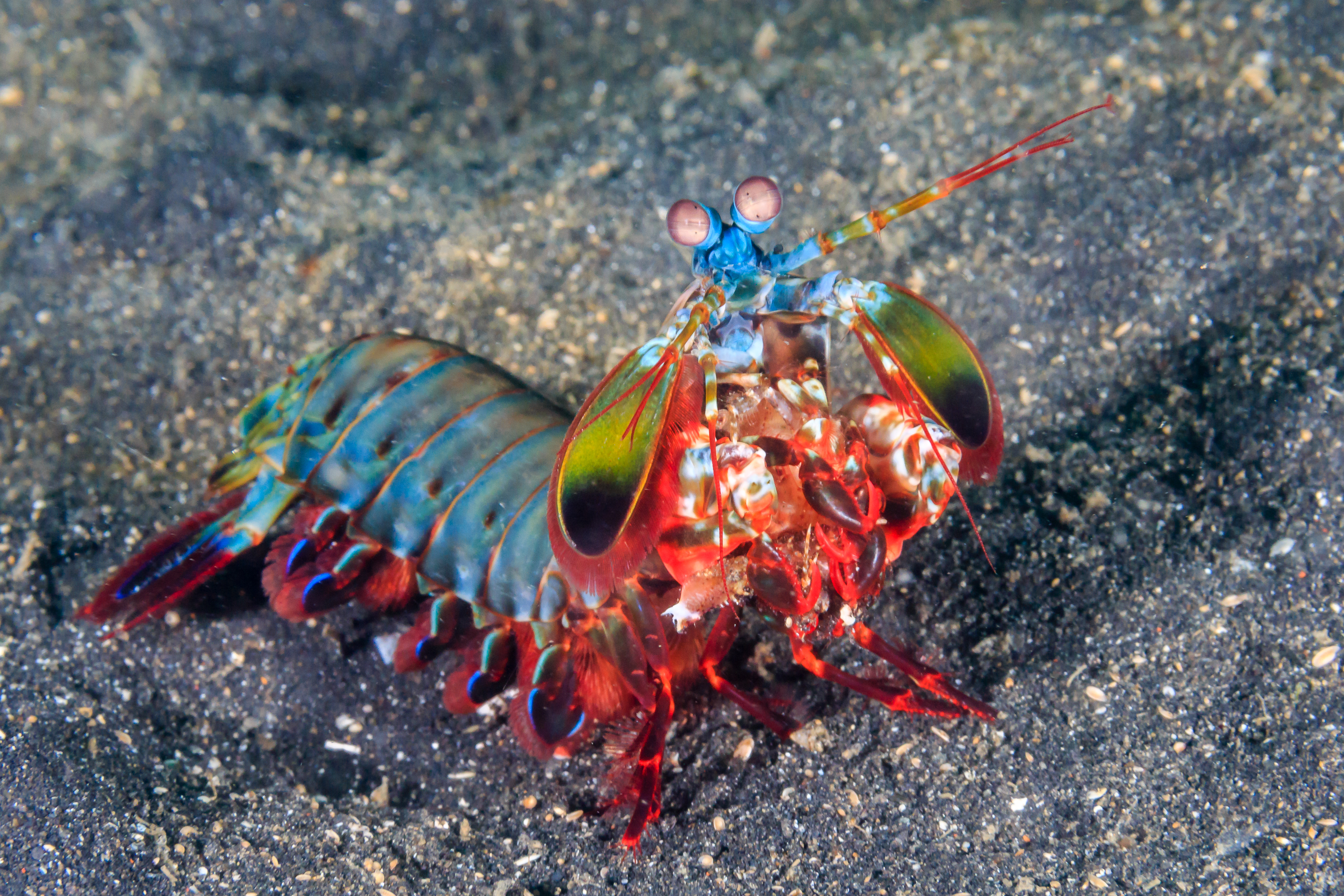Scientists reveal who has the fastest punch on Earth
The mantis shrimp has been found to have one of the fastest, most powerful punches in the natural world.

Forget about Mike Tyson or Muhammad Ali, the fastest punch in the world belongs to the mantis shrimp.
This shrimp can smash a shell with the force of a .22 caliber bullet and remain intact despite the shockwaves created by its own punches, according to a research paper published in Science.
Scientists have found that the mantis' punch limb, which is called the dactyl club, has a structure that enables it to absorb the shockwaves that are created when it punches and cracks the shells of its prey.
"The mantis shrimp is known for its incredibly powerful strike, which can break mollusk shells and even crack aquarium glass," Horacio Espinosa, a professor of mechanical engineering and biomedical engineering at Northwestern University and one of the paper's authors, said in a press statement.
"However, to repeatedly execute these high-impact strikes, the mantis shrimp's dactyl club must have a robust protection mechanism to prevent self-damage," Espinosa said.
He continued: "We found it uses phononic mechanisms, structures that selectively filter stress waves. This enables the shrimp to preserve its striking ability over multiple impacts and prevent soft tissue damage."
A stock photo of a mantis shrimp, which scientists have found has a remarkably powerful punch and has evolved so that its soft tissues are not damaged by the shockwaves this produces. A stock photo of a mantis shrimp, which scientists have found has a remarkably powerful punch and has evolved so that its soft tissues are not damaged by the shockwaves this produces. Getty Images/WhitcombeRD
The researchers say that these findings could help the design of new artificial materials with useful properties, such as mechanical filters for mobile phones and other electronics.
The mantis has a hammer-like club positioned on each side of its body. The clubs are spring-like structures that store energy in elastic form and are held in place by latch-like tendons. When the latch is released, the stored energy is, too, and this fires the club toward its prey with explosive force.
Espinosa said: "When the mantis shrimp strikes, the impact generates pressure waves onto its target. It also creates bubbles, which rapidly collapse to produce shockwaves in the megahertz range.
"The collapse of these bubbles releases intense bursts of energy, which travel through the shrimp's club. This secondary shockwave effect, along with the initial impact force, makes the mantis shrimp's strike even more devastating."
The researchers were surprised that this huge force did not damage the shrimp's delicate nerves and tissues, which are enclosed in armor.
An analysis of the armor found that it had structure patterns that protected the club against fractures as well as other intricate features that act as a phononic shield, filtering out high-frequency stress waves to prevent damaging vibrations from traveling to the shrimp's arm and body.
"The periodic region plays a crucial role in selectively filtering out high-frequency shear waves, which are particularly damaging to biological tissues," Espinosa said.
He added, "This effectively shields the shrimp from damaging stress waves caused by the direct impact and bubble collapse."
Reference
Alderete, N. A., Sandeep, S., Raetz, S., Asgari, M., Abi Ghanem, M., & Espinosa, H. D. (2025). Does the mantis shrimp pack a phononic shield? Science, 387(6734). https://doi.org/10.1126/science.adq7100









)






